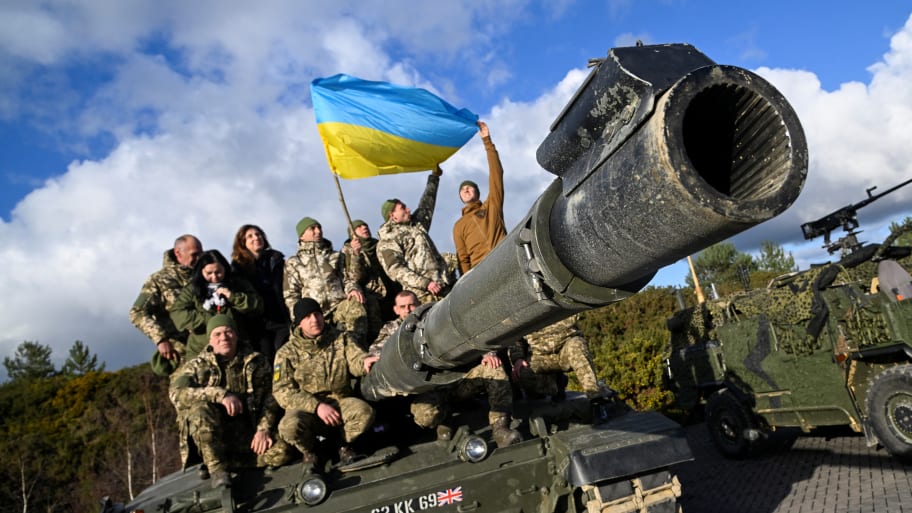
Update on Depleted Uranium Weapons in Ukraine
The International Coalition to Ban Uranium Weapons
(August 26, 2024) — Since Russia invaded Ukraine in February 2022, The International Coalition to Ban Uranium Weapons (ICBUW) has drawn critical attention to the use of depleted uranium weapons in the ongoing war. ICBUW first warned about possible DU use by the tanks Russia has deployed in the invasion, and now also because both the United States and the United Kingdom have since delivered tanks and the DU ammunition for them to Ukraine.
While both the United States and United Kingdom have been public about delivering DU ammo and the tanks that fire it to Ukraine, Russia has neither confirmed nor denied the use of its own DU tank ammunition in Ukraine. With Russia now reportedly importing arms from North Korea, the need for transparency in the international arms trade only increases when considering the proliferation of toxic munitions with the capacity to harm untold generations to come.
ICBUW reminds the warring parties and their arms suppliers of the United Nations General Assembly Resolution on Depleted Uranium (RES/77/49, 07.12.22), which urges states to take all necessary measures to address the environmental and health impacts of DU weapons, including providing medical care and cleaning up contaminated sites.

This is because the use of depleted uranium weapons poses a long-term health threat to civilians and military alike, hinders the reconstruction of conflict-ravaged areas, spreads fear, and the consequences are difficult and costly to resolve. Especially in urban areas of battle, DU weapon use and contaminated remnants are an important source of radioactive and chemical toxic contamination.
ICBUW volunteers have undertaken a Ukraine Project to document and identify locations where these weapons have been used in this war, to assist in warning returning residents and post-conflict relief workers about the hazards of this toxic war debris.
When we consult official sources for more information or assistance with this Project, until now we are met with silence. For this and other reasons, the monitoring activities of independent NGOs are of critical importance. ICBUW continues to collaborate and exchange information with NGOs that work on the ground.
ICBUW has documented the DU weapons known and possibly in use in Ukraine, and produced information about identifying uranium ammunition and evidence of its possible use, as well as instructions for safe handling of ammunition remnants and contaminated debris to mitigate exposure and harm to military personnel and returning civilians. Post-conflict relief workers also need to know where and how to mitigate the health impact of environmental contamination from the use of these radioactive and chemically toxic munitions.
As part of this Project, ICBUW is actively soliciting assistance with obtaining documentation and open-source intelligence (OSINT) about possible DU use in combat in Ukraine. Without reliable data about locations where DU armor-piercing munitions and DU equipped tanks were used we are limited in helping to inform the local population and the military.
This information would include but is not limited to official documentation of DU use in battle in Ukraine, verifiable video and still images of damaged armor showing projectile penetrations and video of combat involving the known platforms in Ukraine for DU ammunition. Some visible pyrophoric effects can suggest possible DU use, and armor penetrations from DU ammo are distinctive. The fragments of uranium penetrators also develop distinctive oxidation.
Geographic location information about tank combat involving suspected use of DU ammo is essential for post-conflict evaluation of risk. Without reliable data we can not ensure that those who are most affected by these weapons are given the support and the protection they need.
Of growing concern to one expert, Doug Weir of the Conflict and Environment Observatory and formerly of ICBUW, is the possible use of DU ammo by the Bradley Fighting Vehicle, an American armored personnel carrier seeing increasing use in battle in Ukraine.
The United States has so far delivered 186 Bradleys to Ukraine, along with 250,000 25mm rounds for its M242 Bushmaster cannon, but it remains unclear whether these rounds are M919 APFSDS depleted uranium rounds, M791 APDS tungsten-core rounds or M792 high-explosive rounds.
Please contact ICBUW at info@icbuw.eu if you have information and/or expertise to assist in this Project.
